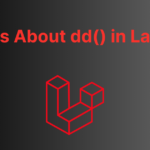Mastering the Nuances of Eloquent Model Methods
One of the first tips is the difference between the `isDirty()` and `wasChanged()` methods in Eloquent models. These two methods serve similar purposes, but they operate at different stages of the model’s lifecycle.
- The
`isDirty()`method allows you to check if a property of an Eloquent model has been modified before the model is saved. This can be useful if you want to perform additional actions based on the changes made to the model. - The
`wasChanged()`method, on the other hand, is useful after the model has been saved. It allows you to determine which properties were actually changed during the save operation.
By understanding the distinction between these two methods, you can write more robust and efficient code that responds appropriately to changes in your Eloquent models.
Grouping Scheduled Commands in Laravel 11.x
A new feature introduced in Laravel 11.32 is the ability to group scheduled commands. This functionality is similar to the way you can group routes with shared middleware, prefixes, and other properties.
- In previous versions of Laravel, scheduled commands were defined in the
`app/Console/Kernel.php`file. In Laravel 11, this has been moved to the`routes/console.php`file. - With the new grouping feature, you can organize your scheduled commands by grouping them based on shared properties, such as the schedule, middleware, or other attributes.
- This can help you maintain a more organized and maintainable codebase, especially as the number of scheduled tasks in your application grows.
By leveraging this new grouping feature, you can keep your scheduled command definitions clean and easy to manage, making it simpler to understand and modify your application’s scheduled tasks.
Handling Deleted Models in Queued Jobs
The next tip discusses a potential issue that can arise when working with queued jobs that are related to Eloquent models. If the model referenced by the queued job is deleted from the database before the job is executed, the job may fail to run.
- To address this, Laravel provides the
`deleteWhenMissingModels`property, which can be set to`true`on the job class. - Alternatively, you can use the new
`DeleteMissingModels`PHP attribute, which serves the same purpose. - When either of these options is enabled, the job will not be executed if the referenced model is no longer available in the database.
This is an important consideration when working with queued jobs, as it can help you avoid unexpected errors and ensure your application’s reliability.
Reflecting on Class Constants
The next tip showcases a useful technique for working with class constants in PHP. Often, you may have a class with numerous constants, and you need to access them programmatically.
- The
`ReflectionClass`utility in PHP allows you to introspect on a class and retrieve information about its properties, methods, and constants. - By using the
`getConstants()`method of the`ReflectionClass`, you can easily obtain an array of all the constants defined within a class.
This can be particularly helpful when you need to work with a large number of constants, or when you want to dynamically access or manipulate the constants based on certain conditions or requirements.
Mastering the PHP Ternary Operator
There’s a helpful cheat sheet for the PHP ternary operator, which is a concise way to write simple if-else statements.
- The basic syntax is
`condition ? valueIfTrue : valueIfFalse`. - The cheat sheet covers various use cases, including chaining multiple ternary operators, using the null coalescing operator (
`??`), and working with nullable types.
Understanding the power and flexibility of the ternary operator can help you write more expressive and compact code, improving the readability and maintainability of your PHP projects.
Generating Collections with Collection::times()
The `times()` method of the Laravel collection class allows you to generate a collection with a specified number of elements, based on a provided callback function.
- The
`times()`method takes two arguments: the number of elements to generate and a callback function that defines the logic for each element. - This can be useful when you need to create a collection with a dynamic number of items, or when you want to generate a collection based on some predefined formula or pattern.
By leveraging the `times()` method, you can write more concise and expressive code for generating collections, making your application more flexible and easier to maintain.
Simplifying API Versioning in Laravel 11
Laravel 11 introduces a simplified process for versioning API endpoints.
- In previous versions of Laravel, managing API versioning often required complex routing configurations and middleware setups.
- In Laravel 11, the
`routes/api.php`file has been replaced with a new`routes/api`directory, which allows you to define separate route files for each API version. - Additionally, the
`bootstrap/app.php`file now includes a`$app->version()`method, which allows you to set a default API version prefix (e.g.,`v1`) for your application.
This new approach to API versioning in Laravel 11 makes it easier to maintain and scale your application’s API, as you can easily add, modify, or remove API versions without affecting the rest of your codebase.
Optimizing Database Queries with Eloquent Relationships
There’s a useful technique for optimizing database queries when working with Eloquent relationships.
- When you need to retrieve the latest record from a related model, you can use the
`latest()`method in combination with the relationship name. - For example, if you have a
`Post`model that belongs to a`User`model, you can retrieve the latest post for each user using the following code:`User::with('posts:id,created_at')->latest('posts.created_at')->get();`.
This approach can help you avoid unnecessary database queries and improve the performance of your application, especially when dealing with large datasets or complex relationships.
Leveraging Readable Relationship Syntax in Eloquent
Eloquent offers a more readable and expressive syntax when working with model relationships.
- Instead of using the traditional
`belongsTo()`and`hasMany()`methods, you can use the`is()`and`has()`methods, which provide a more natural, English-like syntax. - For example, instead of
`$post->belongsTo(User::class)`, you can use`$post->is(User::class)`. Similarly, instead of`$user->hasMany(Post::class)`, you can use`$user->has(Post::class)`.
This syntax can make your Eloquent code more readable and easier to understand, especially for developers who are not familiar with the traditional Eloquent relationship methods.
Simplifying Pivot Table Interactions with the toggle() Method
The `toggle()` method provides a useful way of working with pivot tables in Eloquent.
- When working with many-to-many relationships in Eloquent, you often need to attach, detach, or sync records in the pivot table.
- The
`toggle()`method simplifies this process by allowing you to toggle the attachment state of one or more records in the pivot table. - If a record is not attached, it will be attached. If a record is already attached, it will be detached.
This can be particularly helpful when you need to quickly update the relationship between two models without having to explicitly check the current state of the pivot table.
Exploring the Popularity of Front-end Frameworks in the Laravel Community
A recent poll explored the popularity of front-end frameworks among Laravel developers.
- The poll shows that Tailwind CSS is the most popular front-end framework, with 64% of respondents using it in their Laravel projects.
- However, a significant portion (30%) of respondents still use Bootstrap, indicating that there is still a strong presence of this framework in the Laravel community.
These findings suggest that while Tailwind CSS is gaining traction, there is still a place for Bootstrap in the Laravel ecosystem. Developers should consider the specific needs and preferences of their project and team when choosing a front-end framework.
Conclusion
The 12 tips covered in this video provide a wealth of valuable information for Laravel developers, covering a range of topics from Eloquent model methods to API versioning and front-end framework preferences.
By mastering these tips and techniques, you can:
- Write more efficient and robust Eloquent code
- Streamline your application’s scheduled tasks
- Optimize database queries and model relationships
- Improve the readability and maintainability of your PHP code
- Stay up-to-date with the latest features and best practices in the Laravel ecosystem
Check out our other blog articles to help further explore and apply these tips in your own Laravel projects.
Happy coding!








The new grouping feature for scheduled commands in Laravel 11.32 seems like a game-changer for keeping code clean and manageable. It’s great to see how Laravel continues to simplify complex tasks, making development more efficient. The issue with queued jobs and deleted Eloquent models is a crucial reminder to handle edge cases carefully—definitely something to keep in mind for robust applications. The tip about dynamically accessing class constants in PHP is a clever approach, especially for larger projects with many constants. The ternary operator cheat sheet is a handy resource for writing cleaner code, though I wonder if overusing it could harm readability. The simplified API versioning in Laravel 11 is a welcome addition, but how does it handle backward compatibility in real-world scenarios? Overall, these updates show Laravel’s commitment to improving developer experience, but I’d love to hear more about how these features perform under heavy workloads. What’s your experience been like with these new features in production?
Great insights on Laravel 11.32 and PHP techniques! Grouping scheduled commands seems like a game-changer for managing tasks more efficiently. The point about queued jobs and deleted models is crucial—definitely something to watch out for to avoid unexpected crashes. The mention of class constants is also handy; I often struggle with managing them in larger projects. The ternary operator cheat sheet is a lifesaver for cleaner code. Simplified API versioning in Laravel 11 sounds promising for scaling applications. I’m curious, though—how would you handle versioning for APIs that need to support legacy systems without breaking changes? Would love to hear your thoughts!
The new grouping feature for scheduled commands in Laravel 11.32 seems like a game-changer for keeping code clean and manageable. It’s great to see how it mirrors the route grouping functionality, which has always been a favorite feature of mine. The tip about queued jobs and Eloquent models is crucial—I’ve definitely run into issues where a deleted model caused a job to fail unexpectedly. The technique for working with class constants in PHP sounds intriguing, especially for larger projects where constants can get out of hand. The ternary operator cheat sheet is a nice touch—it’s such a powerful tool, but it’s easy to misuse if not understood properly. The simplified API versioning process in Laravel 11 is a welcome addition, as managing API versions can often be a headache. How do you handle cases where a queued job depends on a model that might be deleted before execution? Would love to hear your approach!
The new grouping feature for scheduled commands in Laravel 11.32 sounds like a game-changer for keeping code clean and manageable. It’s great to see how Laravel continues to simplify complex tasks. The issue with queued jobs and deleted Eloquent models is something I’ve encountered before—definitely a good reminder to handle such cases carefully. The tip about dynamically accessing class constants in PHP is intriguing; I’ll have to try that in my next project. The ternary operator cheat sheet is a handy resource, especially for writing more concise code. Simplified API versioning in Laravel 11 seems like it will save a lot of time and effort. How do you handle versioning in your APIs currently? Do you think this new approach will significantly reduce the complexity?